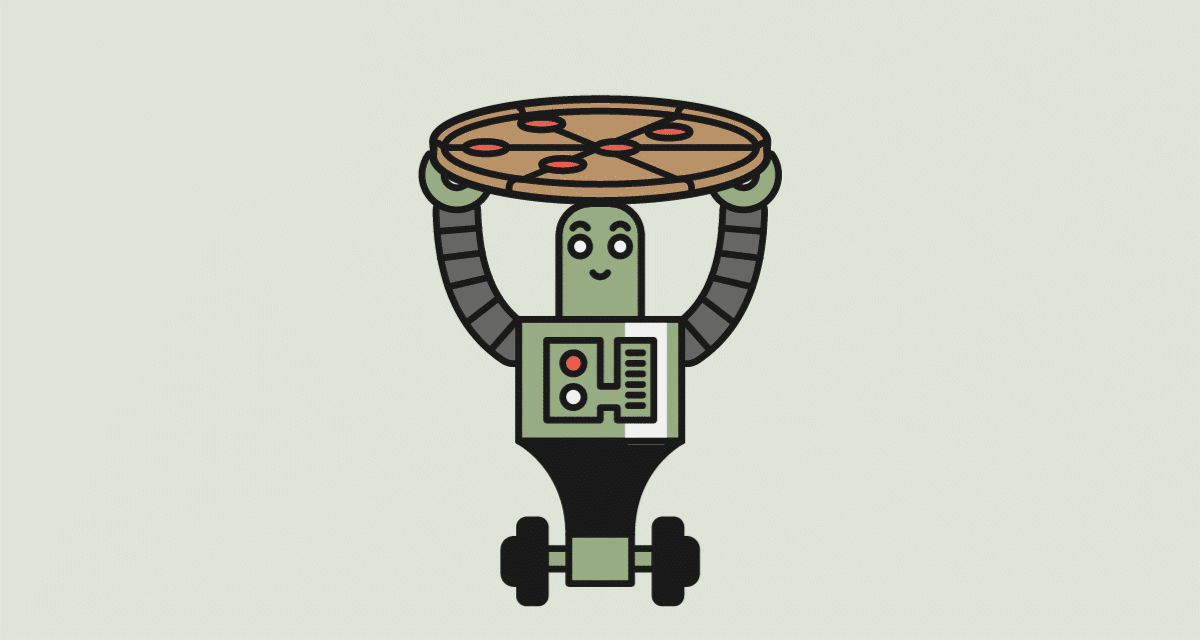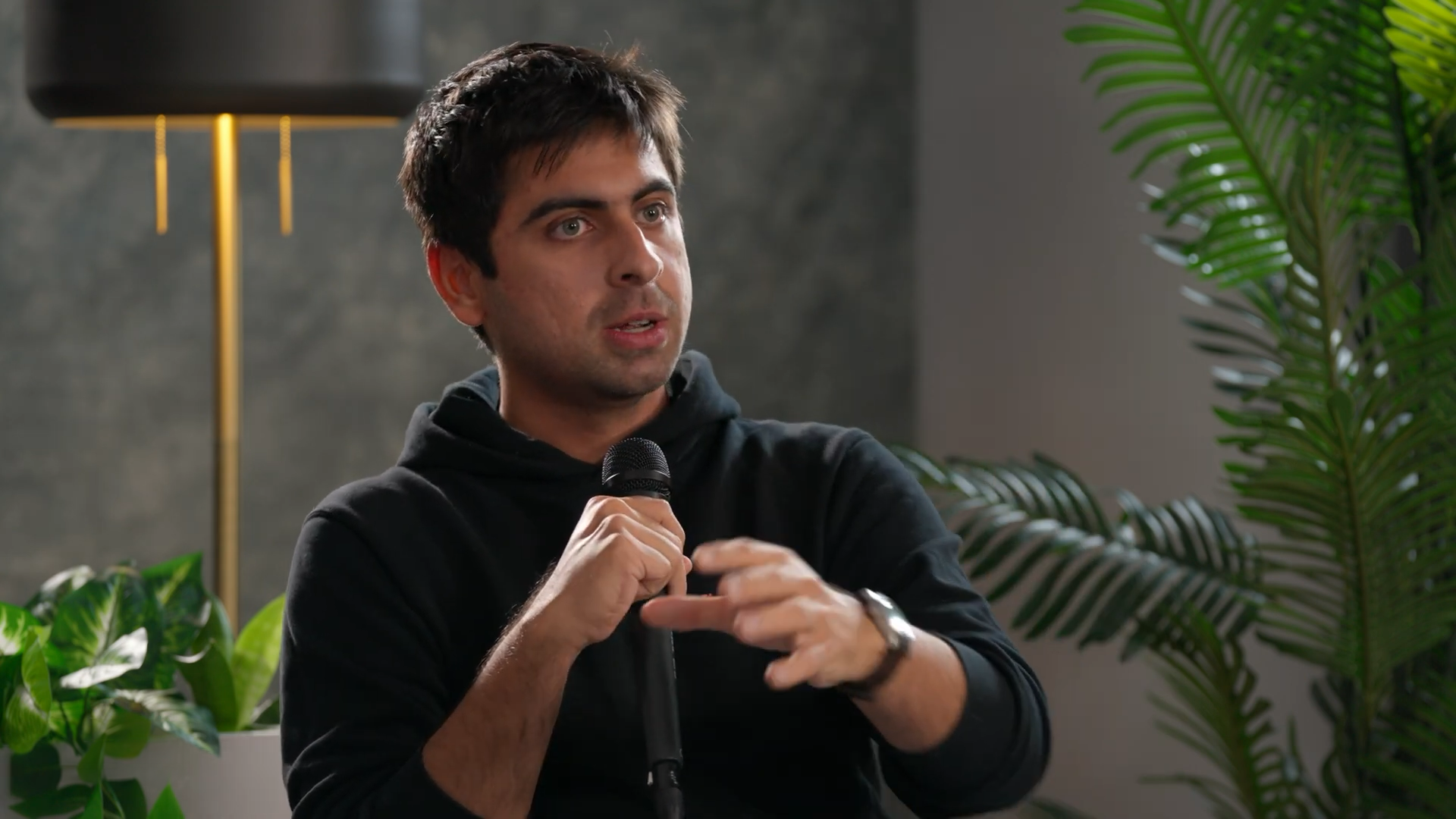Here are 6 Japanese startups with global ambitions
Japanese tech has been the byword for cutting edge for decades. Even with the increased competition from companies based in South Korea and China, Japan still filed the second most patents in the world in 2015 (PDF link), and it has one of the highest numbers of patents per person in the world. Much of this drive for innovation can be traced back to the Japanese focus on STEM education in schools, with a rich history of academic labs creating new and exciting tech through research and development.
Leave a Nest began as a bio venture company 14 years ago to employ and encourage science graduates to utilize their education to build solutions. It brings together Masters and Ph.D holders in science and technology to build sustainable solutions. Not only does it provide training and education in these fields, but it now runs an accelerator program called Tech Planter.
The program is supporting over 40 companies in the early seed stage in hardware, biotech, and agricultural technology, providing services from mentoring to business planning and fundraising. The companies come from Japan, Singapore, Taiwan, Malaysia, India, and Thailand. The program has 200 teams in 2016, up from 145 in 2015, and works with universities, corporates, and VCs to help find and accelerate startups in more unique spheres of tech. The combination of academic scientific researchers, business ideas, and corporates, makes for a very unique environment where academics are exploring the business ideas of tomorrow and not just the back-end technology. The program also provides applicants a platform to pitch their business ideas directly to large businesses and corporates.
Registration for the Singapore event ends on June 13. In the mean time, here are some of the most exciting startups that are working in this space.
1. Euglena is using microorganisms to feed and fuel the planet
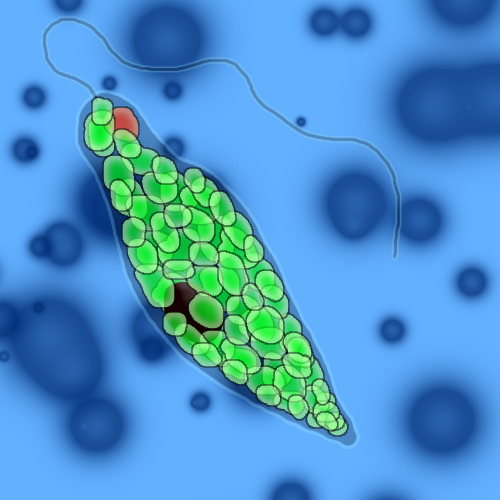
Photo credit: naturalismus
Euglena is a single-celled microscopic algae. It is a unique organism that can accumulate nutrients by photosynthesis. By itself, that is not a particularly interesting observation, but the startup, also named Euglena, is trying to make it more exciting.
This Japanese firm, founded in 2005, is engaged in research and development, production, and sales of euglena and related products. Euglena contain almost all of the necessary nutrients that the human body needs, which makes them a potential functional food component to solve some of the planet’s food problems.
President Mitsuru Izumo, the founder of Euglena, saw the problems of famine and poverty when he visited Bangladesh in 1998. Izumo felt motivated to find solutions for the problems of famine and poverty. Two years later from this experience, he found out about the nutrient rich organisms.
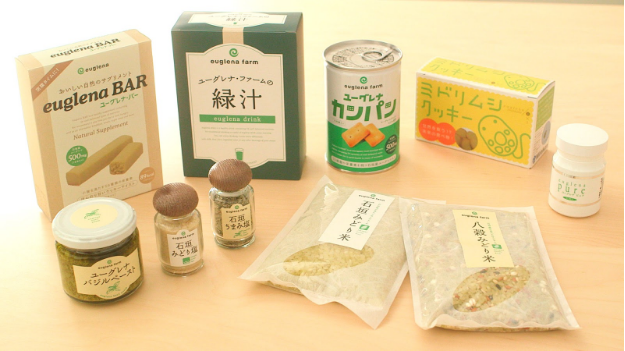
Euglena products.
His startup finally succeeded in creating the world’s first outdoor mass culture of euglena in December 2005. The team has since started research into extracting oil from the euglena, which has great potential to be used as jet and vehicle fuel.
2. Miraikikai is building intelligent robots to do difficult jobs
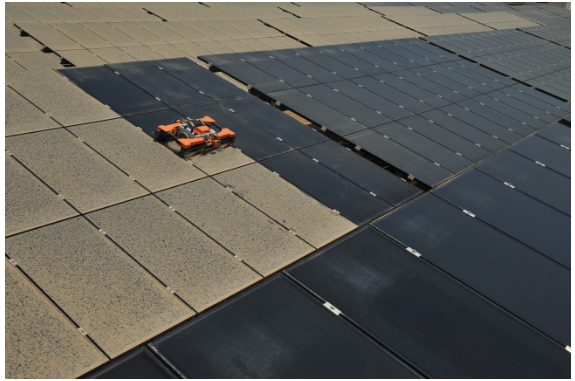
Cleaning solar panels in the desert.
Miraikikai’s robots offer solutions to very specific but very valid problems – like, how does one clean the panels on solar-powered buildings? The answer, simply enough, is an autonomous cleaning robot.
As an autonomous machine, the robot works a bit like a Roomba, cleaning the solar cells without water. Not only do you save on water and labor costs, you get high cleaning performance compared with manual cleaning using water. The company has found a market for its robots in the desert, particularly in the city of Dubai, which averages around seven to eight hours of sunshine a day. But the desert sand tends to get on the surface of the solar panels, which decreases the amount of energy they can create.
The startup grew out of Kagawa University in 2004. After the success of its wall-climbing window-cleaning robot, which was exhibited at the World Expo 2005 and won the Good Design Award from the Japan Institute of Design Promotion, the startup is now looking to build on that same technology to create autonomous robots to simplify complex and tedious jobs. Its latest triumph was winning the ‘Real Tech Venture of the Year’ award from Tech Planter in 2016.
3. Challenergy is making energy safer for us all
The tsunami that lead to the Fukushima nuclear plant meltdown was a turning point in the life of Atsushi Shimizu, founder of Challenergy. After witnessing the disaster on TV, he was convinced that this should never happen again. So Atsushi began working on the idea of wind turbines to produce energy safely and sustainably.
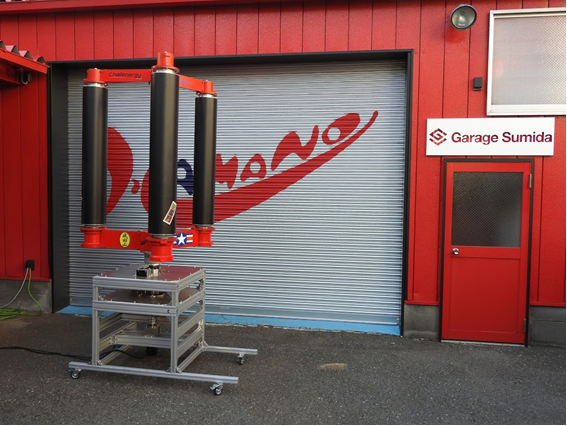
A prototype wind turbine at Garage Sumida.
He combined two ideas in wind turbine engineering that had never been combined before. He merged a quieter turbine design that can work in extreme conditions such as typhoons with a system that does not need to be pointed in the direction of the wind. Instead it uses the principles of the Magnus Effect, when a force on a spinning object makes it curve.
The company is now working with Garage Sumida, the incubation space run by Hamano, a sheet metal processing and manufacturing company in Tokyo, to mass produce the technology.
The aim is to bring it to developing countries where people can set up their own turbines and generate their own energy. A great example is the Philippines – a country prone to typhoons with an energy infrastructure under huge strain.
An average typhoon releases as much kinetic energy as half the world’s electricity-generating capacity. Traditional wind turbines cannot work in such extreme conditions, but the technology Challenergy is working on can theoretically be applicable here.
Challenergy received the first prize in the first business plan competition run by Tech Planter in 2014, the Tech Plan Grand Prix.
4. Photosynth is making dumb locks smarter
We’ve all faced the same situation many times: you come home from some serious shopping, bags in hand, and now the only thing that stands between you and your home is the front door. Your hands are full and your front door key is in your right pocket. Instead of having to put down your bags and rummage through your pockets to unlock your door, Photosynth’s Akerun sits on your door, acting as a bridge between the door lock and your smartphone.
Now your door will always know when you are close, so it can open up as you walk near to it.
It can share keys with multiple users and keep a log of the traffic at your front door. The best part is that this web-connected device does not need you to replace the lock. Instead, just fit this device on the door, and turn your door into a sophisticated portal.

Akerun attaches itself to your door and connects to your smartphone.
This can also be used at offices to provide temporary access to certain people. Real estate developers can similarly issue temporary access to potential renters or buyers as they look at properties. The team is now experimenting with short term leases on empty office spaces in Tokyo.
Installing these locks on the front doors of empty offices allows people to rent access to these spaces via a web app. This means users can access the offices without the need of human interaction. Simply book the office space online, and the key is sent to your smartphone. Go to the office, unlock the door, and use the space. This allows offices to generate a per hour rental fee.
Photosynth was a finalist at Tech Plan Grand Prix in 2014, and then next year it secured US$4 million in funding.
5. Kakaxi is bringing IoT to farmers
After Japan’s 2011 tsunami and the destruction that followed, Taizo Otsuka decided to bring technology to farmers and help them recover quickly from the disruption that followed.
Kakaxi is a smart farm device, powered by the sun and using 3G to connect to the web, that automatically knows when a farmer is nearby and transmits vital farm information to his mobile. The device itself is provided rent-free to farmers, who can implement it easily on their own farms.
The startup’s aim is to help people understand the effort that farmers go through in order to provide food that is safe, delicious, and nutritious. The device has an internal camera that transmits timelapse images and illustrations online, working solely on solar power.
The point of all this is to close the gap between farmers and end users, increase the level of information in the public domain, and make it more easily accessible. By collecting this data and transmitting it via their app, end users are able to view, understand, and educate themselves on how their food is grown and processed. In an age where food is becoming scarce and global warming is threatening arable land, amplifying this kind of data is crucial to improving our understanding of sustainable food sources.
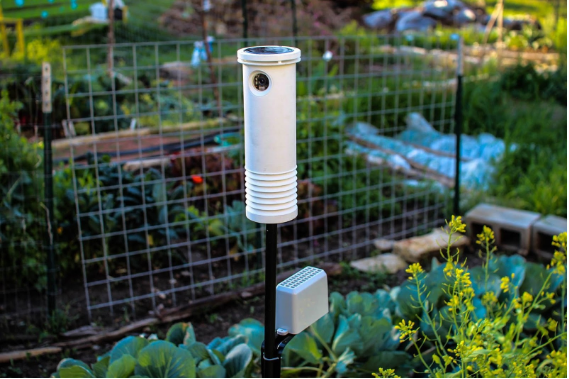
The Kakaxi device being used on farms.
Kakaxi was a finalist at the first Agri-Science Grand Prix from Tech Planter in 2014.
6. Metagen is analyzing your poop to keep you healthy
It’s not the prettiest truth in the world, but there is a wealth of information about our health in our waste. In an effort to better understand the human body and to provide a service that could potentially save lives, Metagen (link in Japanese) makes smart toilets that analyze your… um… remainings to give you a better idea of what’s going through your body and how you might want to live better and longer. That’s why CEO Dr. Shinji Fukuda, who studied intestinal microorganisms in his doctoral studies, calls poop “brown gems.”
Metagen CTO Dr. Takuji Yamada is also a scientist – specifically, a bioinformatician. These two scientists, with their signature metabologenomics, have managed to make analysis of intestinal environments in one’s feces possible.
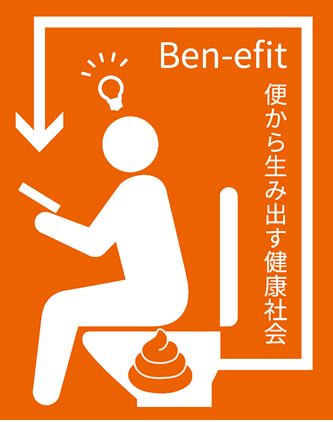
‘Ben’ means feces in Japanese.
In an effort to commercialize their solution, they are currently working with Morishita Jintan on a research collaboration to analyze the effect of Morishita’s supplement containing bifidobacteria. This is all being done in an effort to eventually develop a commercial platform which can result in a “disease-free society.” Their ambition is to be the best probiotic treatment on the market.
The startup won the first prize at the BioScience Grand Prix from Tech Planter in 2015.
Japan realigns its startup future
Japan’s new wave of startups are looking to build on the knowledge of the past to create effective solutions for the future. These highlighted startups are just some of the companies that are thinking about our present and our future in new and unique ways.
Interested in attending the Singapore event on June 23? Applications end on June 13. Click here to register.
Leave a Nest is a Japanese accelerator that has supported over 146 teams since commencing operations in 2014. With its Tech Planter program, it now supports teams from India, Malaysia, Thailand, Singapore, Taiwan, Hong Kong, and Silicon Valley. Tech Planter is currently traveling the world, and will be in Malaysia on June 3, in Thailand on June 19, in Singapore on July 23, and in Taiwan on August 28. The winner from these rounds will be invited to join the other winners in the finals in Tokyo.![]()
Registration for the Singapore round will close on June 13, and an information session will be held on May 30. You can find out more about each local event here.
Recommended reads
 How Singapore hopes to become a world robotics leader
How Singapore hopes to become a world robotics leader SG firm aspires to be Stripe of AI services
SG firm aspires to be Stripe of AI services Oracle offers free AI training to 10,000 Singapore students, professionals
Oracle offers free AI training to 10,000 Singapore students, professionals Decode the future: Experience the GenAI Showcase at Saigon Summit
Decode the future: Experience the GenAI Showcase at Saigon Summit AI firm raises $1.1m to help companies create more trustworthy AI apps
AI firm raises $1.1m to help companies create more trustworthy AI apps This startup gives AI agents access to frictionless finance
This startup gives AI agents access to frictionless finance Malaysia’s thirst for AI data centers could leave it high and dry
Malaysia’s thirst for AI data centers could leave it high and dry Microsoft invests $2.9b in Japan to boost country’s AI capabilities
Microsoft invests $2.9b in Japan to boost country’s AI capabilities Singaporean celebs test out new startup’s AI avatars
Singaporean celebs test out new startup’s AI avatars Mowito uses robotics and AI to speed up warehouses
Mowito uses robotics and AI to speed up warehouses
Editing by Terence Lee and Steven Millward
(And yes, we’re serious about ethics and transparency. More information here.)


